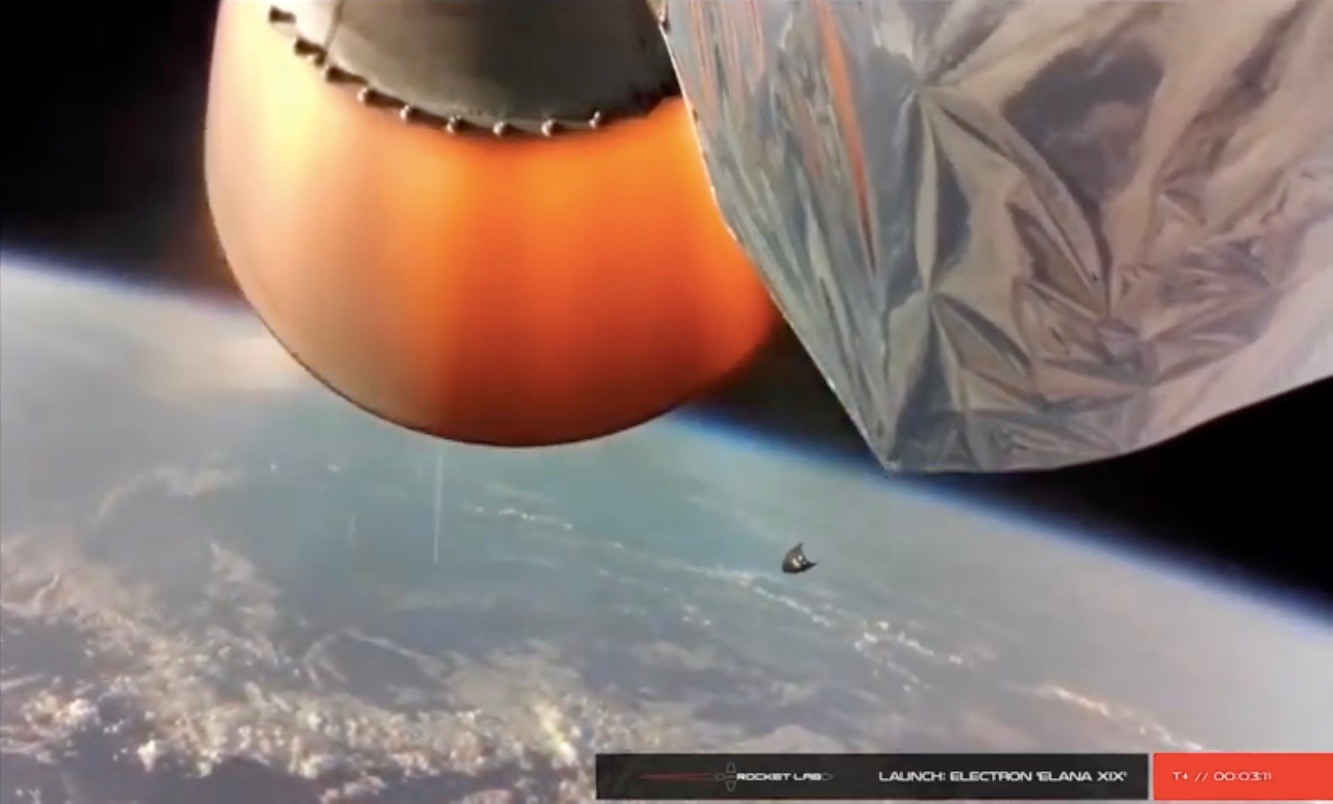Rocket Lab's ramp-up is going well so far.
The spaceflight startup launched 13 tiny satellites on its first-ever mission for NASA early this morning (Dec. 16), just a month after acing its first commercial flight.
A Rocket Lab Electron booster lifted off from the company's launch site on New Zealand's Mahia Peninsula at 1:33 a.m. EST today (0633 GMT and 7:33 p.m. local New Zealand time), kicking off the ELaNa-19 mission for NASA. [In Photos: Rocket Lab and Its Electron Booster]
Fifty-three minutes later, all of the payloads had separated from the Electron's "kick stage" and settled successfully into a circular orbit about 310 miles (500 kilometers) above Earth.

The little satellites will do a variety of work up there. For example, one will measure radiation levels in the Van Allen belts, to help researchers better understand possible effects on spacecraft. Another aims to demonstrate the effectiveness of compact, 3D-printed robotic arms; and yet another will help prove out technology for a new solar-sailing system that could allow small spacecraft to explore deep space, Rocket Lab representatives said.
California-based Rocket Lab aims to greatly increase access to space using the expendable Electron, which is 57 feet (17 meters) tall and can carry about 500 lbs. (227 kilograms) to Earth orbit on each $5 million mission. (The ELaNa-19 cubesats together weigh about 172 lbs., or 78 kg, Rocket Lab representatives said.)

Get the Space.com Newsletter
Breaking space news, the latest updates on rocket launches, skywatching events and more!
ELaNa-19 is part of NASA's Educational Launch of Nanosatellites program, which aims to spur and maintain young people's interest in science, technology, engineering and math. The mission marked the first time that NASA cubesats have not had to share a rocket ride with a much bigger "primary payload," Rocket Lab representatives said. (Ten of the 13 satellites are specific ELaNa payloads; the other three are also NASA cubesats, Rocket Lab spokeswoman Morgan Bailey told Space.com via email.)
The ELaNa-19 launch followed relatively quickly on the heels of "It's Business Time," Rocket Lab's first commercial mission. "It's Business Time" lifted off on Nov. 10 from the Mahia Peninsula, carrying six small satellites and a technology-demonstrating "drag sail" to orbit.
The Electron has two other orbital flights under its belt as well — demonstration missions called "Just a Test" and "Still Testing," which launched in May 2017 and January of this year, respectively. Despite its name, "Still Testing" succeeded in lofting four small satellites to orbit.
On those other flights, the rocket and mission names were the same. But that changed with ELaNa-19, whose Electron was called "This One's for Pickering." The name honors the New Zealand-born Sir William Pickering, who led the team that developed Explorer 1, the United States' first successful satellite. Pickering, who died in 2004 at age 93, also directed the Jet Propulsion Laboratory from 1954 to 1976.
Not all Rocket Lab missions will take off from the Mahia Peninsula site. The company recently announced that it also plans to fly from the Mid-Atlantic Regional Spaceport in Virginia; the first liftoffs from U.S. soil could take place as early as next year, Rocket Lab representatives have said.
Today's launch was originally scheduled for Wednesday night (Dec. 12), but Rocket Lab stood down for several days to let a weather system pass through.
Mike Wall's book about the search for alien life, "Out There" (Grand Central Publishing, 2018; illustrated by Karl Tate) is out now. Follow him on Twitter @michaeldwall. Follow us @Spacedotcom or Facebook. Originally published on Space.com.
Join our Space Forums to keep talking space on the latest missions, night sky and more! And if you have a news tip, correction or comment, let us know at: community@space.com.

Michael Wall is a Senior Space Writer with Space.com and joined the team in 2010. He primarily covers exoplanets, spaceflight and military space, but has been known to dabble in the space art beat. His book about the search for alien life, "Out There," was published on Nov. 13, 2018. Before becoming a science writer, Michael worked as a herpetologist and wildlife biologist. He has a Ph.D. in evolutionary biology from the University of Sydney, Australia, a bachelor's degree from the University of Arizona, and a graduate certificate in science writing from the University of California, Santa Cruz. To find out what his latest project is, you can follow Michael on Twitter.









